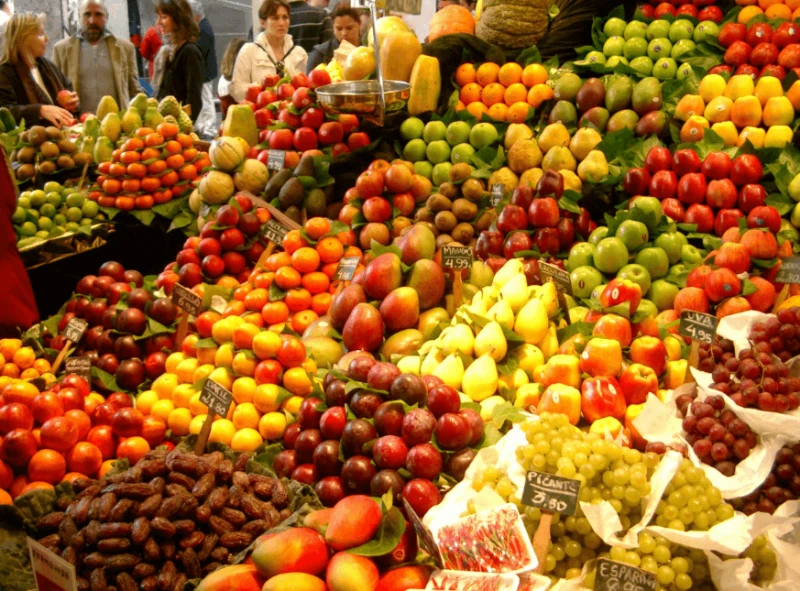Americans’ top 10 favorite genetically-modified foods
Americans’ top 10 favorite genetically-modified foods


To compile our list of the 10 most consumed genetically modified crops in the US, we decided to use data by the U.S. Food and Drug Administration (FDA), which tracks GMO consumption in the United States. We decided to use data by the U.S. Department of Agriculture to ascertain the acreage of each crop attributed to their genetically modified variety.
10. Papaya
Genetically modified papayas were first produced in the U.S. in 1996. Since then, they have been extremely popular in the country. The genetically modified papayas are known to be resistant to ringspot virus. This type of papaya was initially developed by a scientist in Cornell University and is majorly produced in Hawaii.
…
9. Squash
Genetically modified squash is one of the most consumed genetically modified crops in the US. Zucchini and yellow summer squash have been produced and used in the U.S. since around 1994 to 1996… Genetically modified squash is produced for resistance to specific plant diseases, including zucchini yellow mosaic virus and watermelon mosaic virus.
8. Apples
Genetically modified apples have been extremely popular in the U.S., especially because the genetic modification of the DNA prevents the browning of an apple, even after it has been sliced. The Food and Drug Administration (FDA) has approved genetically modified apples and have termed them to be safe to eat.
…
7. Potatoes
Fairly recently, the United States started the production of genetically modified potatoes. This variant of potatoes is resistant to bruising and producing a lesser amount of a cancer-causing chemical, called acrylamide.
This is an excerpt. Read the original post here

 | Videos | More... |

Video: Nuclear energy will destroy us? Global warming is an existential threat? Chemicals are massacring bees? Donate to the Green Industrial Complex!
 | Bees & Pollinators | More... |

GLP podcast: Science journalism is a mess. Here’s how to fix it

Mosquito massacre: Can we safely tackle malaria with a CRISPR gene drive?

Are we facing an ‘Insect Apocalypse’ caused by ‘intensive, industrial’ farming and agricultural chemicals? The media say yes; Science says ‘no’
 | Infographics | More... |

Infographic: Global regulatory and health research agencies on whether glyphosate causes cancer
 | GMO FAQs | More... |

Why is there controversy over GMO foods but not GMO drugs?

How are GMOs labeled around the world?

How does genetic engineering differ from conventional breeding?
 | GLP Profiles | More... |

Alex Jones: Right-wing conspiracy theorist stokes fear of GMOs, pesticides to sell ‘health supplements’




 Viewpoint — Fact checking MAHA mythmakers: How wellness influencers and RFK, Jr. undermine American science and health
Viewpoint — Fact checking MAHA mythmakers: How wellness influencers and RFK, Jr. undermine American science and health Viewpoint: Video — Big Solar is gobbling up productive agricultural land and hurting farmers yet providing little energy or sustainabilty gains
Viewpoint: Video — Big Solar is gobbling up productive agricultural land and hurting farmers yet providing little energy or sustainabilty gains Fighting deforestation with CO2: Biotechnology breakthrough creates sustainable palm oil alternative for cosmetics
Fighting deforestation with CO2: Biotechnology breakthrough creates sustainable palm oil alternative for cosmetics Trust issues: What happens when therapists use ChatGPT?
Trust issues: What happens when therapists use ChatGPT? 30-year-old tomato line shows genetic resistance to devastating virus
30-year-old tomato line shows genetic resistance to devastating virus California, Washington, Oregon forge immunization alliance to safeguard vaccine access against federal undermining
California, Washington, Oregon forge immunization alliance to safeguard vaccine access against federal undermining The free-range chicken dilemma: Better for birds, but with substantial costs
The free-range chicken dilemma: Better for birds, but with substantial costs ‘You have to treat the brain first’: Rethinking chronic pain with Sanjay Gupta
‘You have to treat the brain first’: Rethinking chronic pain with Sanjay Gupta
